database
—is the collection of interrelated stored data that available to the multiple users within one or more organizations; a collection of tables constitute a db in the relational model.
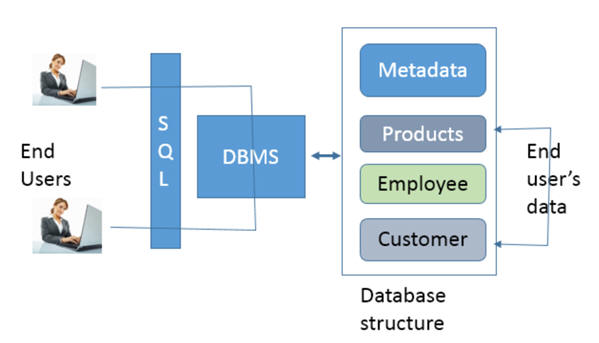
The sole purpose of the database is to store and retrieve relevant data at ease.
In the above scenario, the metadata (data about the data) provides a description of the data characteristics and the relationships that link the data found within the database.
- data : raw facts
- field : group of characters with a common data type
- record : logically connected a set of one more fields
- file : collection of related records.
A File System

A Database:
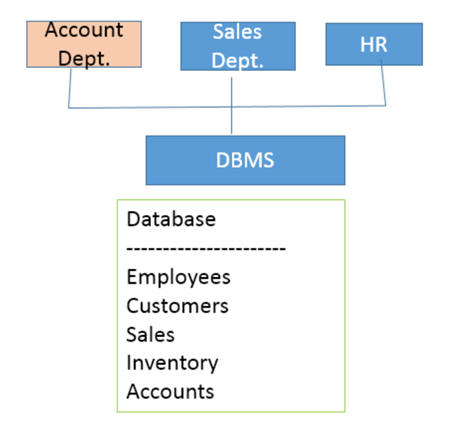
- Redundancy : duplicate fields across the organization., which may also cause data inconsistency. Any change in the data should be corrected, in all the relevant files.
- Inconstancy : Data Entry error like different phone number entered in another file location, e.g. 630-539-2125 rather than 630-529-2125
- Data Dictionary: a rationale of data relationship ( metadata)
- Efficient Data Storage Management
- Data transformation and presentation: DBMS translates "logical " requests into a command that 'physically " locate / retreive that data.
- Enforces security
- Multiuser access controls
- Backup and recovery
- Provides access to the data via a query language
- A relational model [codd, 1970] is rested on "tuples" of name and value pairs.
- Relations are collections of tuples have a mathematical foundation based on set theory.
- Oracle Database is a relational database with object and Extensible Markup Language (XML) capabilities.
- All data is stored in two-dimensional tables that are composed of rows and columns.
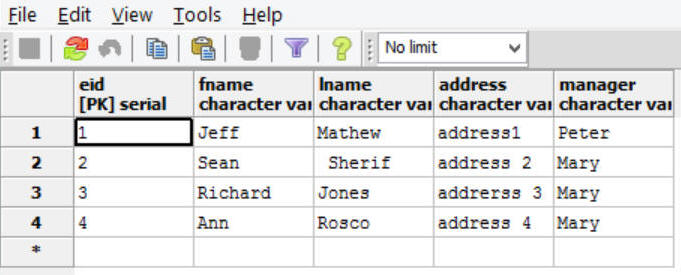
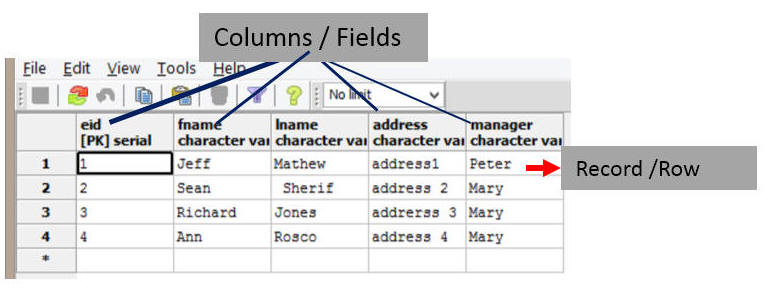
In a relational database, Oracle Database enables you to store data,
update it, and efficiently retrieve it, with a high degree of
performance, reliability, and scalability.
Hierarchical
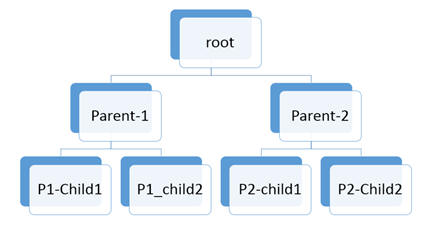
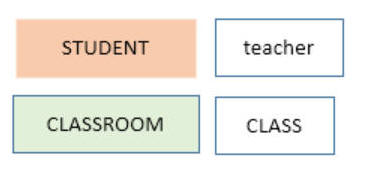
- Teacher teaches :
- Class : contains :
- Students
- Class requires: Classroom.
Riddle of Relation
- Class : contains :
- Teacher may teach many classes, but each class is taught by one
teacher
- One to Many : Teacher to Class
- A Class contains many students, each student may take many
classes
- Many To Many : relations between Student : Class
- A class requires a classroom at one time slot in a day, ( many
times in a day)
- One To Many relation between Class and Classroom